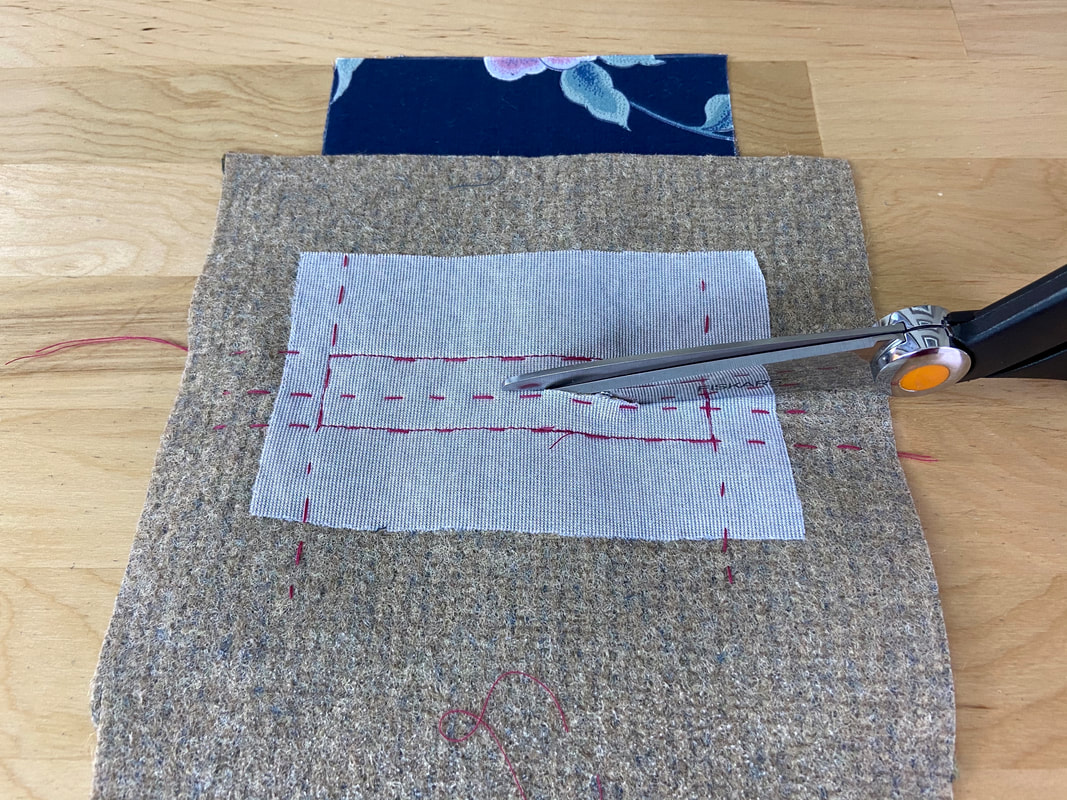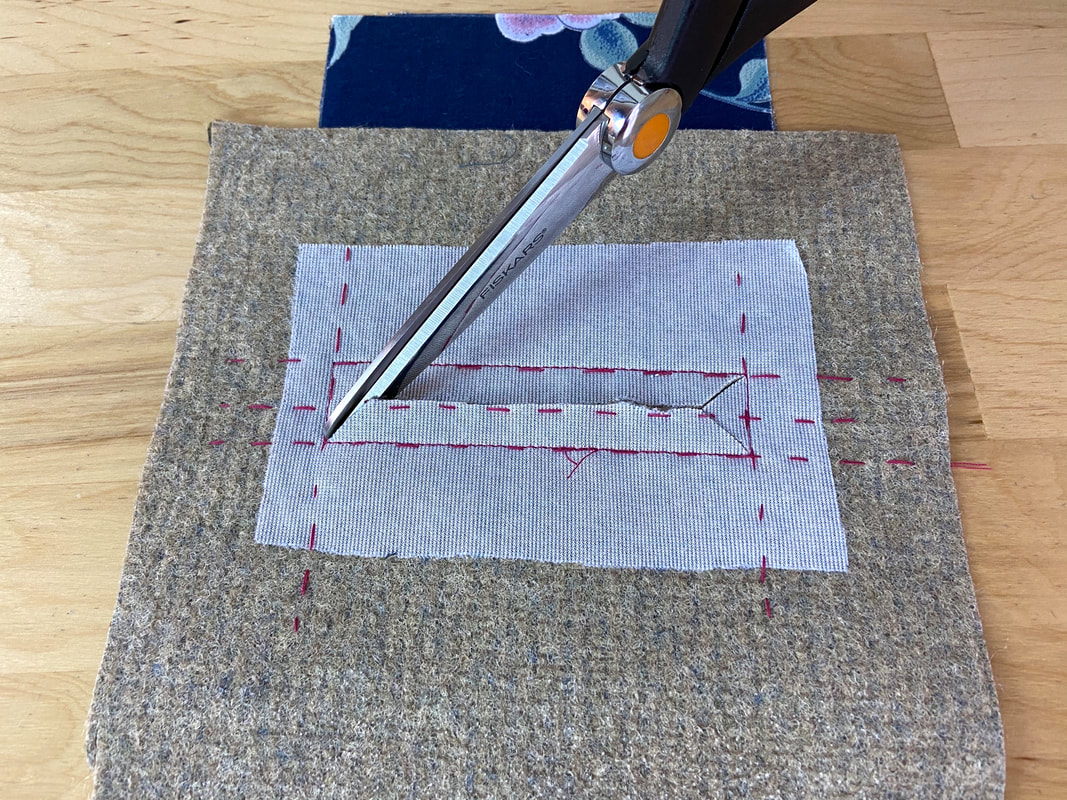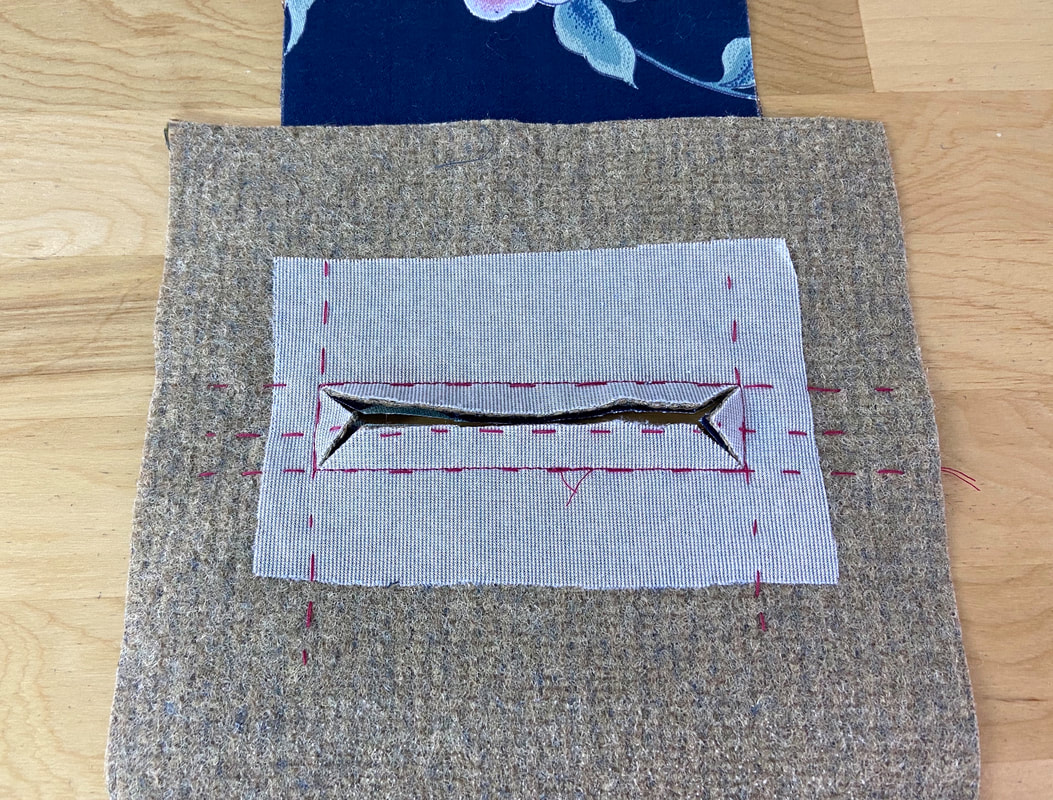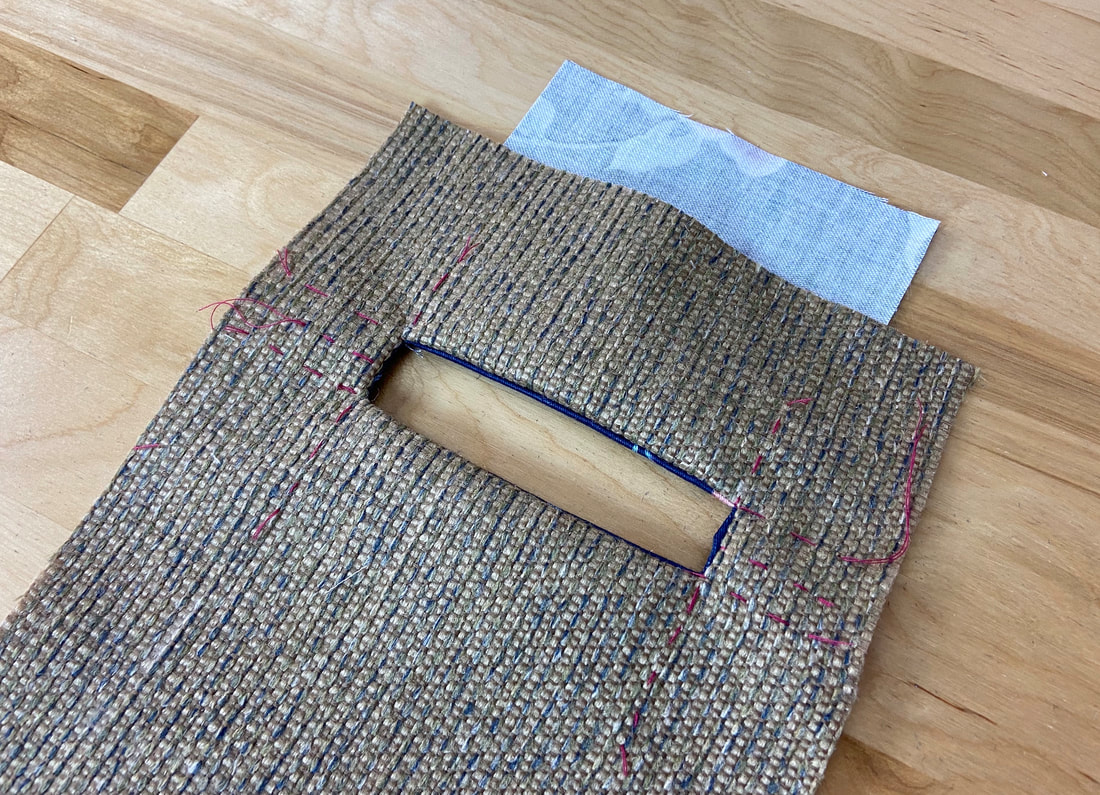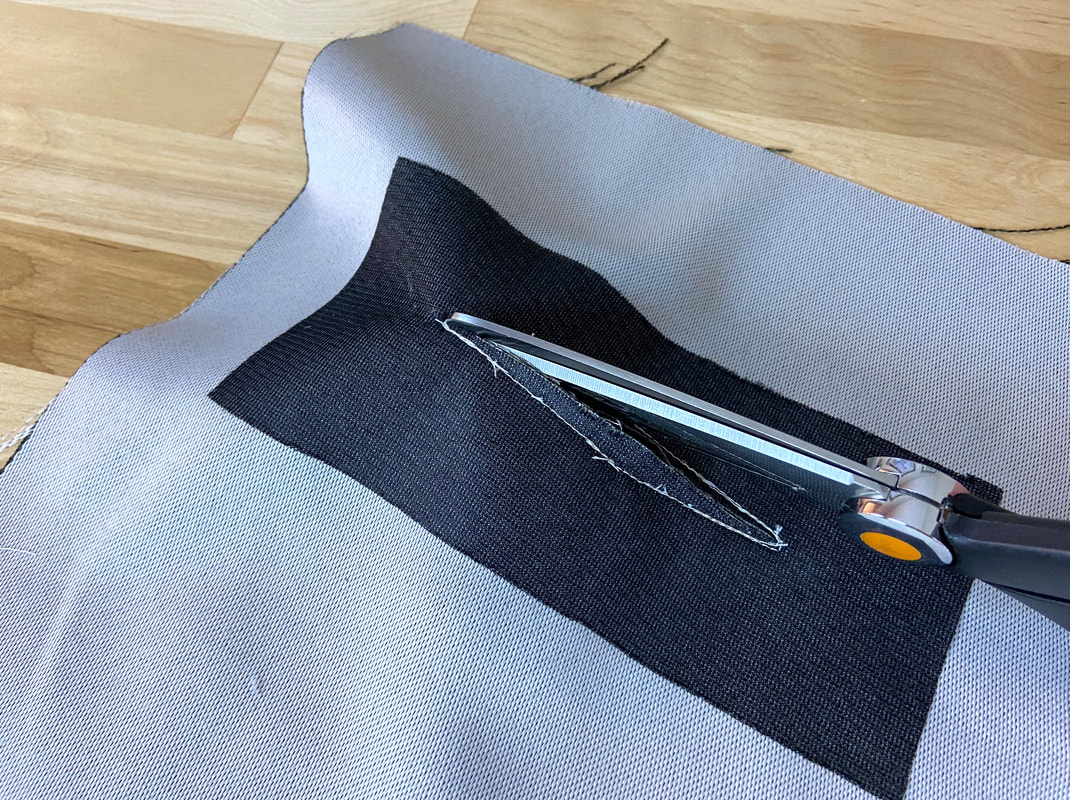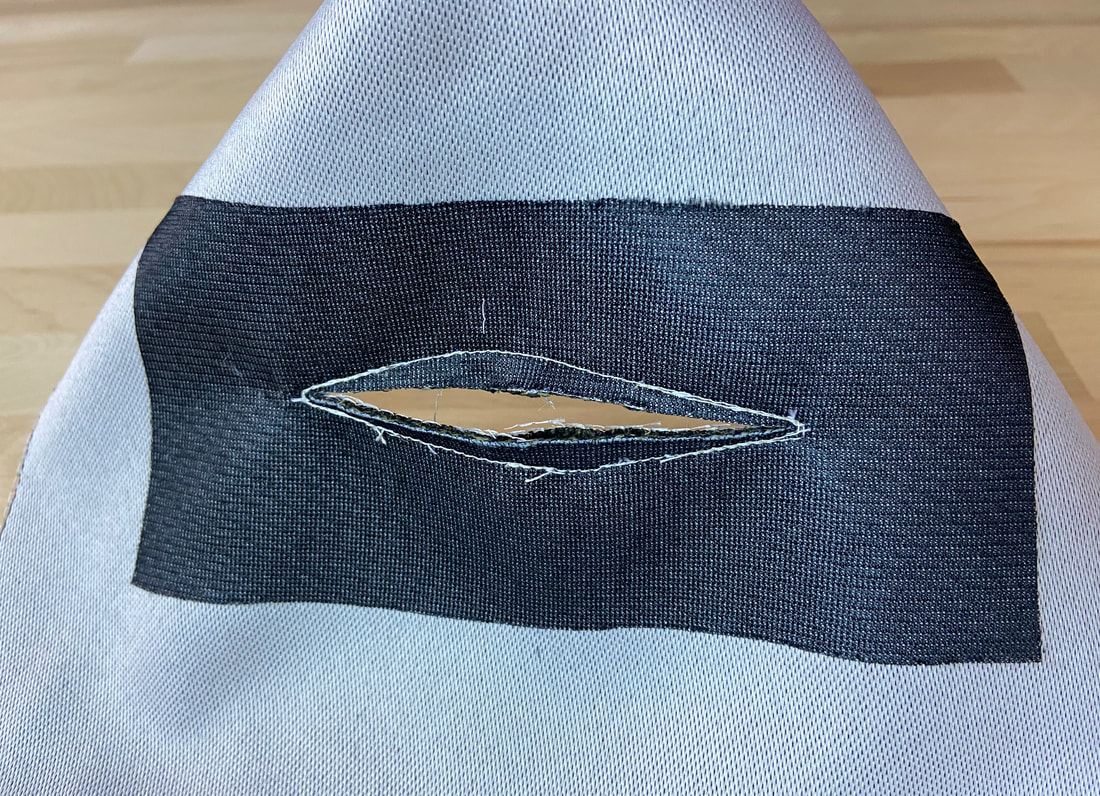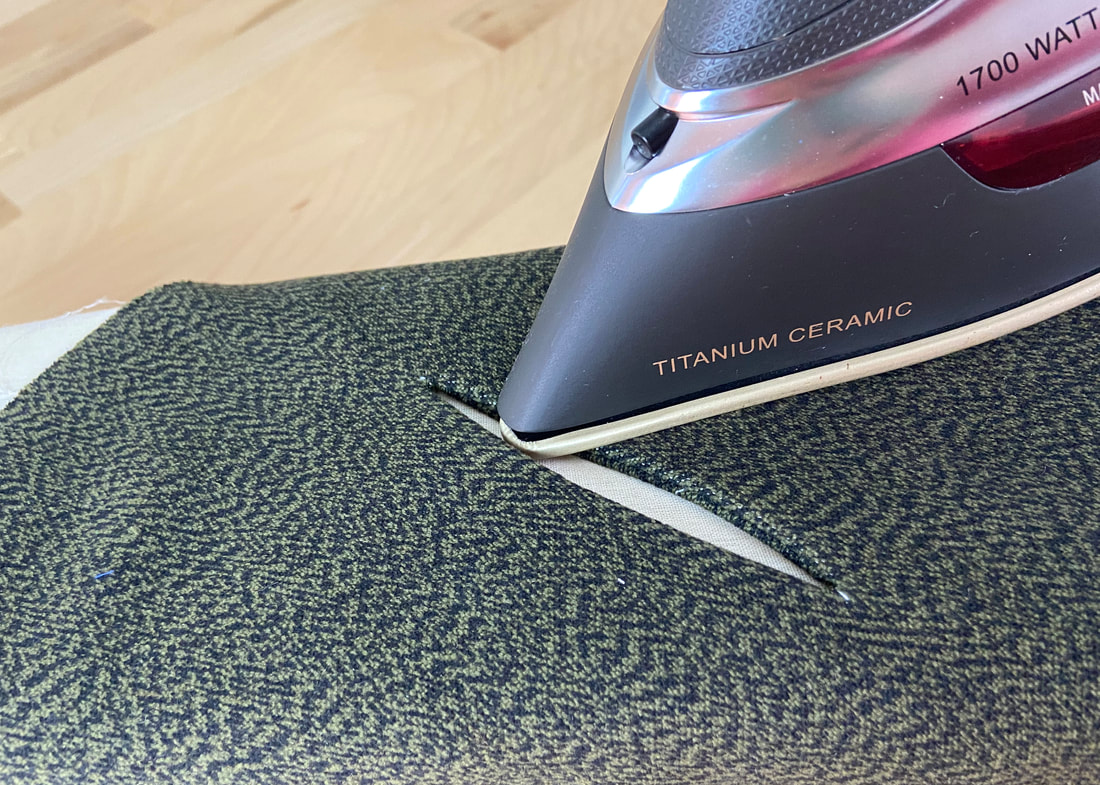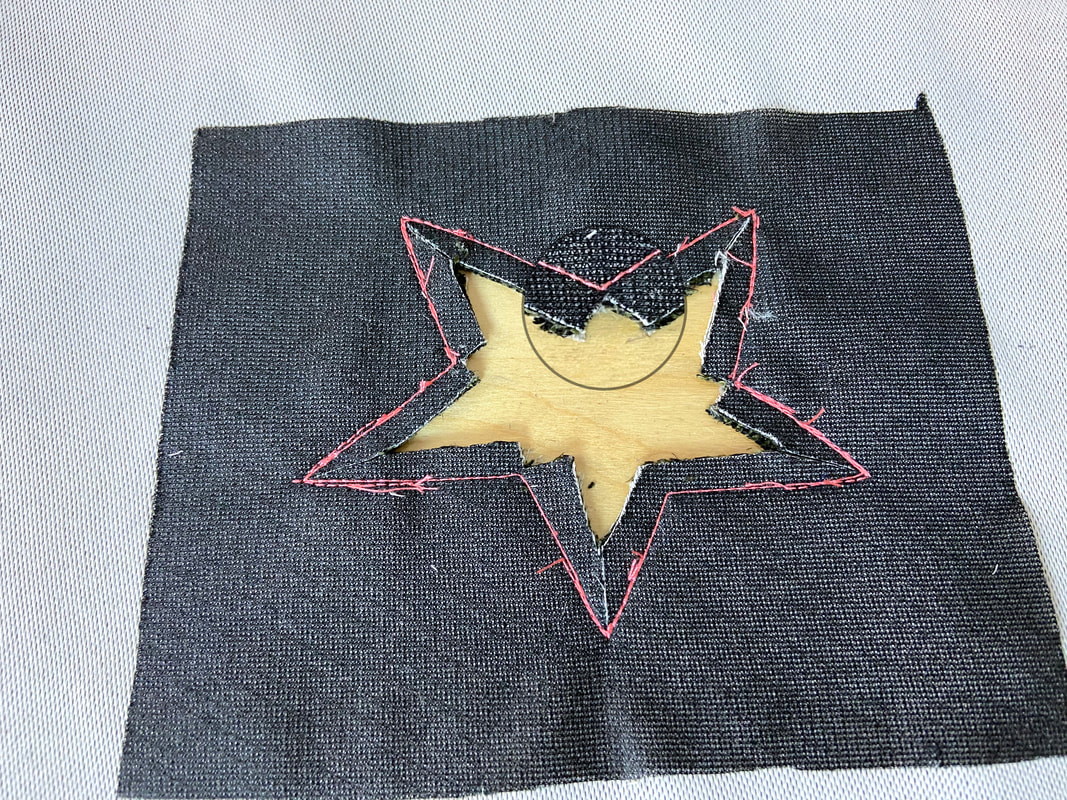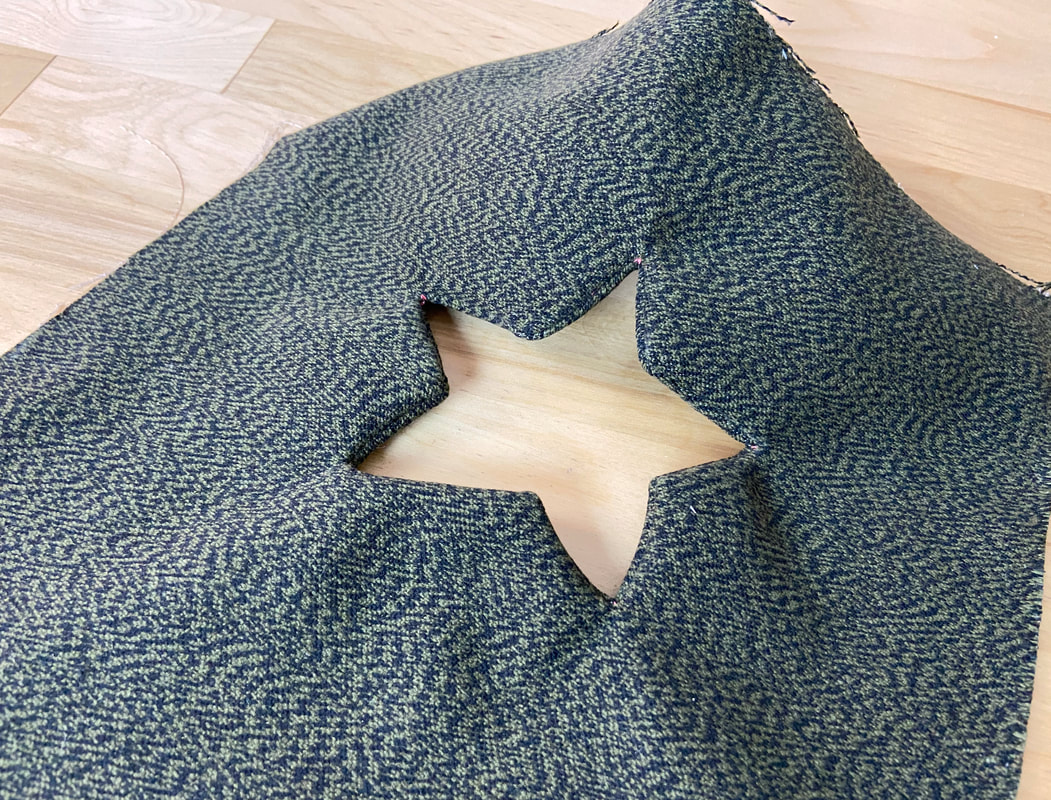Techniques For Cutting Slash Pocket Openings
When sewing slash pockets, two of the most important elements for achieving a smooth, tension-free pocket opening are: cutting the pocket correctly and eliminating excess bulk at key areas.
Here are some basic techniques you should follow regardless of the slash pocket style and shape:
Here are some basic techniques you should follow regardless of the slash pocket style and shape:
When sewing traditional slash pockets such as welt or bound pockets, the opening is first slashed down the center stopping at about 1/2" from each side.
When arriving at each side, cut into each of the rectangle's corners, getting as close as possible to the stitch without (accidentally) cutting into it.
As a result, you should have a triangle extension (cutout) at each end as shown above. The triangular extension will eventually allow you to stitch and stabilize the pocket's sides.
Cutting closely into each corner ensures the pocket's finished edges lay smooth and flat in the finished application. Each corner should remain well-defined and tension-free.
Slash pockets can be constructed in a variety of shapes and sizes. Regardless of shape, slash as close as possible to each corner without, of course, cutting the actual stitching.
Cutting into the corners, regardless of shape, allows you to easily turn the pocket layer onto its right side thus exposing the clean-finished pocket opening edges. If you attempt to do this without clipping close into each corner, you'll find that not only do the pocket layers not lay flat, tension accumulates at each finished corner.
When working with irregular shapes, aside from slashing into inner corners, it is also important to eliminate bulk at key locations within the pocket's seam allowance. For example, the star-shaped pocket pictured above features both inner and outer corners. The star is clipped with a simple slash at each inner corner, while the outer corners receive triangle-shaped wedges for additional bulk removal.
When the finished star-shaped pocket opening is exposed, the corners should be well-defined and have no fabric bulk caused by excess seam allowance. This is why cutting wedge notches at the outer corners is so essential!

